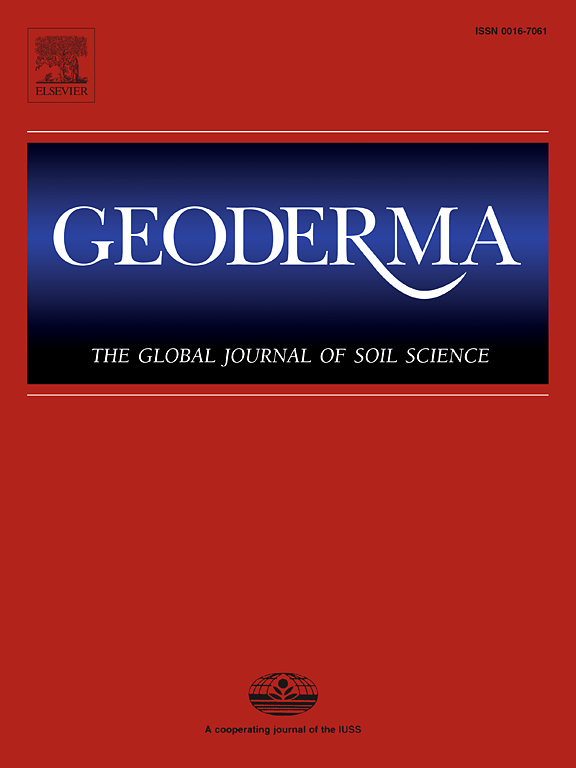Forest gap regulates soil nematode community through understory plant diversity and soil pH
IF 5.6
1区 农林科学
Q1 SOIL SCIENCE
引用次数: 0
Abstract
Soil biodiversity and the structure of soil animal communities are important foundations for forest ecosystem functions. Forest gap formation is an important forest management practice used to transform monocultures into mixed forests. However, whether and how gap size and age affect soil biodiversity and modify nematode communities remains limited. We manipulated gap size (100, 200, and 400 m2) in Pinus massoniana plantations and studied the communities of soil nematodes, bacteria, fungi, and understory plants two and four years after gap formation. Compared to the no-gap treatment, soil nematode abundance across forest gaps increased by a factor of 1.40, which was largely attributed to the increase in herbivorous nematodes as the abundance and diversity of understory plants increased. The increased abundance of soil nematodes in forest gaps was also associated with increased soil pH presumably related to reduced input of pine needles. Furthermore, the abundance (−5.3 %) and diversity (−25.1 %) of soil nematodes decreased with gap age, presumably because of increased soil temperature and decreased soil moisture in the four- compared to the two-year-old gaps. In contrast to nematodes, the abundance and diversity of soil bacteria (21.8 % and 7.1 %) and fungi (10.5 % and 10.0 %) increased significantly with gap age. Overall, forest gaps increased the diversity of understory plants and soil biota, and changed the community and functional group structure of soil nematodes. These results provide guidelines for fostering soil biodiversity and maintaining soil functioning when transforming coniferous forests into mixed forests.
林隙通过林下植物多样性和土壤 pH 值调节土壤线虫群落
土壤生物多样性和土壤动物群落结构是森林生态系统功能的重要基础。形成林隙是一种重要的森林管理方法,用于将单一种植转变为混交林。然而,隙地的大小和年龄是否以及如何影响土壤生物多样性和改变线虫群落的研究仍然有限。我们操纵了马松人工林的间隙大小(100、200 和 400 m2),研究了间隙形成两年和四年后的土壤线虫、细菌、真菌和林下植物群落。与无间隙处理相比,林间隙地的土壤线虫数量增加了 1.40 倍,这主要是由于随着林下植物数量和多样性的增加,食草线虫也随之增加。林间空隙中土壤线虫数量的增加还与土壤 pH 值的增加有关,这可能与松针的输入量减少有关。此外,土壤线虫的丰度(-5.3%)和多样性(-25.1%)随林隙年龄的增长而降低,这可能是因为与两年林隙相比,四年林隙的土壤温度升高,土壤湿度降低。与线虫相反,土壤细菌(21.8 % 和 7.1 %)和真菌(10.5 % 和 10.0 %)的丰度和多样性随着间隙年龄的增长而显著增加。总体而言,林间空隙增加了林下植物和土壤生物区系的多样性,改变了土壤线虫的群落和功能群结构。这些结果为针叶林转变为混交林时促进土壤生物多样性和保持土壤功能提供了指导。
本文章由计算机程序翻译,如有差异,请以英文原文为准。
求助全文
约1分钟内获得全文
求助全文
来源期刊

Geoderma
农林科学-土壤科学
CiteScore
11.80
自引率
6.60%
发文量
597
审稿时长
58 days
期刊介绍:
Geoderma - the global journal of soil science - welcomes authors, readers and soil research from all parts of the world, encourages worldwide soil studies, and embraces all aspects of soil science and its associated pedagogy. The journal particularly welcomes interdisciplinary work focusing on dynamic soil processes and functions across space and time.
 求助内容:
求助内容: 应助结果提醒方式:
应助结果提醒方式:


